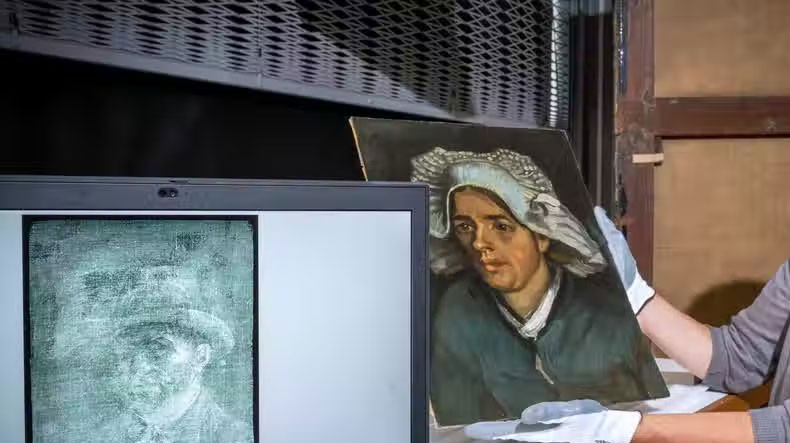
Hidden self-portrait of Vincent Van Gogh discovered by X-ray in Scotland
A previously unknown self-portrait by Vincent Van Gogh has been discovered hidden on the back of another painting.
Experts at the National Galleries of Scotland made the find when the canvas was X-rayed before an exhibition, BBC News reported.
The hidden self-portrait was covered by layers of glue and cardboard on the back of an earlier work called Head of a Peasant Woman.
The gallery's senior conservator Lesley Stevenson said she felt "shock" to find the artist "looking out at us".
She said: "When we saw the X-ray for the first time, of course we were hugely excited.
"This is a significant discovery because it adds to what we already know about Van Gogh's life."
The Dutch artist often re-used canvases to save money, turning them over and then working on the other side.
His work did not sell during his lifetime and his fame came only after his death in 1890, at the age of 37.
Van Gogh became one of the most famous and influential figures in Western art history.
Head of a Peasant Woman entered the National Gallery of Scotland (NGS) collection in 1960, as part of a gift from a prominent Edinburgh lawyer.
It shows a local woman from the town of Nuenen in the south of the Netherlands, where the artist lived from December 1883 to November 1885.
It is thought that Van Gogh later painted the self-portrait on the other side at a key moment in his career, after he moved to Paris and was exposed to the work of the French impressionists.
About 15 years after his death, Head of a Peasant Woman was loaned to an exhibition at the Stedelijk Museum, Amsterdam.
Newsfeed
Videos






























